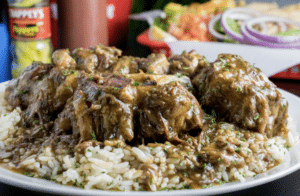Daring Daiquiri: The Cocktail That Influenced Culture
Explore the impact of the daiquiri on art, music, and literature. Discover how this tropical cocktail revolutionized cultural landscapes.
The daiquiri has become an iconic cocktail, loved and enjoyed around the world. But did you know that this drink has had a significant impact on art, music, and literature? That’s right, the daiquiri culture is real, and it’s time to explore its significance.
The Basics
First, let’s start with the basics. The daiquiri is a simple cocktail made with rum, lime juice, and sugar. It’s a refreshing drink, perfect for hot summer days, and it’s easy to make. The origins of the iconic alcoholic beverage are somewhat debated, but most agree that it was invented in Cuba around the turn of the 20th century.
Musical Influence
Now, let’s talk about the cultural significance of this Cuban cocktail. Perhaps the most well-known impact of the drink is its influence on music. The libation has been referenced in countless songs, from the classic “Daiquiri” by Johnny Mercer to the more recent “Daiquiri Factory” by Jimmy Buffett. The drink has become synonymous with relaxation, fun, and good times, making it a natural fit for music about escaping the stress of everyday life.
A Picture Worth a Thousand Daiquiris
The tropical drink has also made its way into the world of art. Artists have been inspired by the cocktail’s bright colors and tropical flavors, using them in their work to evoke a sense of joy and relaxation. One famous example is the painting “Daiquiri” by artist Tom Wesselmann, which features a bright pink daiquiri against a blue background. The painting is playful and fun, perfectly capturing the essence of the rum cocktail.
The Daiquiri in Literature
Finally, the Cuban libation has had an impact on literature as well. Ernest Hemingway famously loved the classic cocktail, and he even has a variation named after him, the Hemingway daiquiri. Hemingway was known for his love of Cuba, and the lime rum drink became a symbol of his time spent on the island.
His writing often references the cocktail, and he even wrote a poem called “Death in the Afternoon” which includes the line, “Pour one jigger absinthe into a Champagne glass. Add iced Champagne until it attains the proper opalescent milkiness. Drink three to five of these slowly.” It’s clear that the daiquiri was an important part of Hemingway’s life, and it’s had an impact on literature to this day.
The Daiquiri is More than a Cocktail
So, what is it about this topical drink that has made it such an important part of culture? Perhaps it’s the simplicity of the drink, which allows for creativity and experimentation. Maybe it’s the association with tropical locales and relaxation. Whatever the reason, it’s clear that the daiquiri has become more than just a cocktail. It’s a symbol of fun, of escape, and of the good life.
The daiquiri culture is real, and it’s had a significant impact on art, music, and literature. From Hemingway’s love of the drink to Wesselmann’s playful paintings, the Cuban cocktail has become a symbol of joy and relaxation. So, the next time you sip a daiquiri, take a moment to appreciate its cultural significance. And who knows, maybe you’ll find some inspiration for your own artistic endeavors. Cheers!


